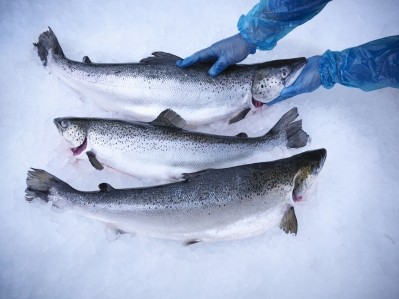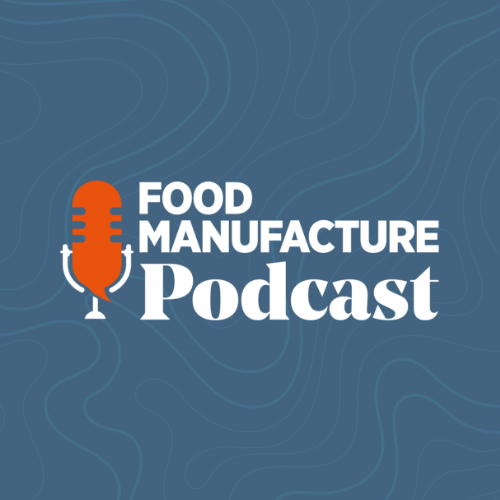Feature
100 years of frozen food: From Clarence Birdseye to multi-billion-pound category

In 2024, the British Frozen Food Federation (BFFF) is celebrating 100 years of frozen food. While the origins of freezing food can be traced back to the 19th century, the BFFF recognises 1924 as the year of the category’s true birth, pointing to the invention of “quick freezing technology” by Clarence Birdseye.
Birdseye was an American inventor and entrepreneur who, while fishing in Newfoundland, Canada, noticed that placing fish on ice after catching them allowed for them to stay fresh and safe to eat once thawed. Fascinated by the possibilities, Birdseye invented the ‘Quick Freeze Machine’ and in the process laid the foundations for the modern frozen food landscape.
In the intervening years since Birdseye made his landmark discovery, the frozen food sector has grown significantly and opened up the opportunity for products to be enjoyed by consumers and around the world. In the UK alone, Kantar data shows that frozen food retail sales were worth £8.5bn during the 52 weeks to 17 March 2024, which represented a year-on-year increase of 11.8%.
The BFFF has overseen much of the sector’s growth in the UK, having been established in 1948 to act as a “unifying force within the industry, representing manufacturers, wholesalers and retailers”. The trade association’s work also involves engaging with policy makers in order to influence regulation as well as promoting the qualities of frozen food with the public.
Asked about the significance of the 100-year milestone and the continued work of the BFFF, chief executive Rupert Ashby responded: "In a society increasingly aware of energy consumption and sustainability, Birdseye’s words resonate: ‘Only through curiosity can we unlock new opportunities’.
“This anniversary prompts us to re-examine our methods, inspiring innovation and the pursuit of more efficient, environmentally friendly ways to store and enjoy frozen food for generations to come.”
Stefan Descheemaeker, CEO of frozen food manufacturer Nomad Foods which owns the Birdseye brand, told Food Manufacture that the advent of flash freezing “revolutionised the food system” and still plays an “ever-relevant role” in modern life.
Descheemaeker continued: “The 100-year anniversary is the perfect time to stop and ask ourselves, what would Clarence do today, how can we build on his legacy, and what does the next 100 years of frozen look like?”
‘An integral part of modern diets’
Looking at the strengths of the frozen food category in 2024, Paul Saunders, the managing director at pastry manufacturer Proper Cornish, which freezes its fillings fresh, pointed to the quality and nutritional value of this approach.
“Frozen food often has the perception of being lower in value and being less healthy whereas, in fact, freezing foods, especially vegetables, locks in vitamins,” he said.
“We use fresh vegetables and ingredients prepared just-in time for every batch, and by supplying them to our customers uncooked, frozen [and] to be baked in-store, it means that the consumer is receiving the best quality product.”
Design and installation of ammonia refrigeration plant
J & E Hall supply bespoke refrigeration solution to leading UK dairy, using the latest HVAC technologies to design and install a bespoke central ammonia refrigeration plant.
Precise regulation of the water temperature is necessary for the dairy’s everyday processes, including cooling its products to specification, which is vital for the successful operation of the dairy.
J & E Hall worked closely with the dairy site in Wales to align the changeover from the old system to the new plant with its annual dairy shutdown. The new plant had to be installed and dry-tested in two days before operations started up again.
The new ammonia refrigeration plant cools chilled water from +6.0°C down to temperatures ranging between +0.5°C and +1.0°C, which is necessary for the dairy’s process requirements.
The new plant optimises the dairy’s performance, reduces energy use, increases efficiency and ultimately cuts costs.
Ashby agreed, stating that frozen food has “become an integral part of modern diets” because it offers “convenience and nutritional value”.
He continued: “Rapid freezing technology ensures that all key nutrients are preserved making frozen foods just as healthy as fresh throughout their entire lifespan in your freezer.”
The quality of frozen products is an especially valued selling point today, with consumers increasingly concerned over the health credentials of every product they buy. Like many in the food sector, this trend has not gone unnoticed by Nomad Foods.
“We’ve championed nutritional improvement since our inception in 2015, and we are proud that as of this year, over 93% of our net sales are from healthier meal choices or compliant with the UK government’s legislation on foods high in fat, sugar and salt (HFSS),” said Descheemaeker.
Moreover, the fact that frozen products tend to compare favourably in terms of price to their fresh counterparts is another advantage, especially during a period where such high levels of food and drink inflation have rattled the UK.
“Frozen food is cost-effective; it provides excellent value for money and accessibility to a wide range of consumers,” said Ashby. “The category also excels in variety and quality, with a wide range of fruits, vegetables, meats, seafood and prepared meals to cater to diverse tastes and dietary requirements.”
As well as offering affordable quality, frozen foods are often less wasted due to their extended shelf life. As Saunders explained: “Food waste can be reduced by using frozen foods as you are able to use only what you need – which is good in terms of the environment as well as cost.”
Ashby added that finding products with an “extended shelf life” was at “the top of many household agendas” as it enables consumers to shop less often – and without best before date concerns.
“Frozen products are also less prone to spoilage through the logistics chain compared to chilled or ambient alternatives,” Ashby concluded.
Reduced waste, as Descheemaeker noted, is also crucial if the F&B sector is to reduce its impact on the planet: “Our industry leading life cycle assessment shows that frozen food performs very well against alternatives in terms of carbon footprint, partly due to much lower levels of food waste.”
Frozen food trends
While frozen foods are seen a cheaper alternative to fresh produce, this should not leave the impression that it’s without innovation.
As Descheemaeker explained, the demand for more affordable foods has driven exciting new product development within the frozen aisle: “The breadth of products available has certainly grown over time and our job at Nomad Foods is to continue innovating with new, exciting and versatile products that fit consumers evolving lifestyles, preferences and cooking habits.”
“For example, since Covid we’ve seen a spike in the use of air-fryers as a method of meal preparation, so we’ve rolled out air-frying instructions on our packaging.”
Ashby echoed this sentiment: “The current cost of living crisis is driving consumers to look for more affordable alternatives, and we have seen a rise in consumers replacing meals out with at-home dining experiences at a fraction of the cost.
“This is leading to innovation across the board, as manufacturers look to provide main dishes and desserts that would be complex and time-consuming to prepare from scratch. Consumers are also seeking healthier alternatives, with added vegetables and plant-based products remaining popular.”
Innovation does not always need to groundbreaking, Ashby pointed out, and can be as simple as experimenting with finishing touches.
“Glazed, coated and dusted products that can be cooked from frozen in a matter of minutes offer consumers a taste of the exotic with little effort required,” he said.
Saunders has seen considerable growth in the demand for and sales of frozen vegan products, with more consumers adopting a vegan diet or looking to reduce their meat intake because of environmental, animal rights or health reasons.
“Consumer perceptions of vegan baked goods are changing and at Proper Cornish we are seeing a shift in vegan product requirements, with some consumers moving away from the meat substitute products towards more plant-based natural ingredients,” he added.
“With calls for clean label claims on plant-based foods becoming louder and consumers seeking a less complicated list of ingredients, there is a focus on improved quality and nutrition.”
Provenance is another key trend that Saunders highlighted, with UK consumers particularly concerned about reducing the distance their food has travelled. However, they still want to experiment with new flavours, which has resulted in the phenomenon of “British Fusion”, as Saunders defines it.
“This trend fits well with pasties and savoury pastries, as so many consumers are familiar with the concept of a pasty, sausage roll or a slice, and these familiar products can easily be adapted to merge with other world flavours,” he explained.
“Combine this with the consumers’ desire to use food to explore world and travel experiences with interesting bold Mexican and Asian flavours coming through, and it opens up a whole new world of development opportunities.”
In response to the trends the firm had identified, Proper Cornish developed the new ‘Mexican Style Bean Pasty’, a British Fusion inspired product that is suitable for vegans and flexitarians alike.
“The colourful filling of soft beans, tomatoes and vegetables is blended with Mexican spices to provide a rich spicy aroma and a mild chilli heat, encased in a unique hand-crimped, vegan glazed pastry case that has all the flavour of an authentic four bean Mexican chilli,” Saunders said.
Tinkering with temperatures
While the frozen food category has thrived in recent years, the challenges impacting the wider food and drink sector also persist. One major hurdle firms of all sizes face today is climate change, with pressure to take action being applied by regulators and consumers alike.
From the perspective of the BFFF, the frozen food industry in the UK has been proactive in implementing “sustainable practices throughout their supply chain”.
Ashby pointed to a recent study commissioned by Nomad Foods and conducted by F&B-focused science and technology firm Campden BRI, which showed that storing food at -15°C, instead of the industry standard -18°C, had no impact on product quality, nutrition or taste.
Tested over a 12-month period, it was also found that every 3°C increase in temperature led to a notable drop in freezer energy consumption – approximately 10%.
“This research has profound implications for the frozen food industry,” said Birsen McArdle, value optimisation lead at Campden BRI, told Food Manufacture.
“By adopting higher storage temperatures, manufacturers and retailers can potentially revolutionise the industry by significantly reducing energy consumption and costs. However, implementing these changes requires collaboration among various stakeholders, including trade bodies, retail partners and other key players in the frozen food supply chain.
“The potential benefits of this breakthrough extend beyond just economic savings. By reducing energy consumption, the frozen food industry can contribute to mitigating its environmental impact. This is crucial given that food systems are responsible for a substantial portion of global greenhouse gas emissions and therefore, there is growing pressure on businesses to address sustainability concerns.”
Nomad Foods was enthused by the results, with Descheemaeker describing the study as a “potential game changer”.
“We believe it is the right thing to do, with benefits for everyone in the frozen cold chain and the extended cold chain.”
Despite the ongoing trial, Nomad Foods has continued to explore other ways in which it can reduce the environmental impact of its business and wider supply chain.
“In 2023, we met our SBTi approved target to reduce our absolute emissions by 25% by 2025,” said Descheemaeker.
“Beyond our own operations, we have committed to ensuring that the top 75% of our suppliers by absolute emissions volume develop their own science-based targets by 2025.
“Tackling climate change is a journey but one we are wholly committed to.”
Going against the grain
As mentioned above, the cost of living crisis is another challenge that has forced consumer to adapt their spending habits and while frozen food is typically seen as a more affordable option, Ashby believes that the category is “continuously innovating” in terms of price.
“This includes offering value-packaging, budget-friendly options and optimising production processes to minimise cost, without compromising on quality.”
One example of innovation can be seen at Proper Cornish, which has sought to eschew the trend of ‘shrinkflation’ in order to better serve customers with less disposable income.
“Some manufacturers are taking the opportunity to reduce the size of their products, but we are seeing a trend whereby our customers are wanting larger products as consumers see them as value for money,” explained Saunders.
“When money is tight, consumers want to understand what they are buying and not risk purchasing food they don’t understand. Consumers also want to know where and how products are made, and are paying more attention to ingredient labels, where they are expecting simplicity, transparency and traceability.”
The future of frozen
While it is important to celebrate an important milestone like 100 years of frozen food, the category must continue to cast its eyes forward. With many challenges around the corner preparation is key, but Ashby is cautiously optimistic.
“The frozen food industry enters its centenary year at a time when inflation rates are starting to fall and worker prosperity is beginning to rise,” he said.
“With more spending power, consumers will be looking for new and exciting products which we believe will drive innovation and growth in the category. Additionally, we aim to bring together retailers, customers, FMCG, white goods manufacturers and trade bodies in a collaborative effort to foster meaningful change by increasing the temperature at which we store frozen food.
“By working together, we can drive progress towards a more sustainable and efficient frozen food sector, benefiting both consumers and businesses alike.”
Descheemaeker’s outlook was similarly positive: “The future of frozen food looks bright. Our focus on nutrition, sustainability and innovation, delivered through our iconic brands inspire confidence in our continued ability to create delicious household staples for the next 100 years and beyond.”
Pointing to the freezer temperature study, he added: “It is something Clarence Birdseye would have wanted to explore if he was alive today and we hope he is proud of the progress we are making.”
In other news, Kellogg's has announced a product recall due to concerns over consumers choking.


















